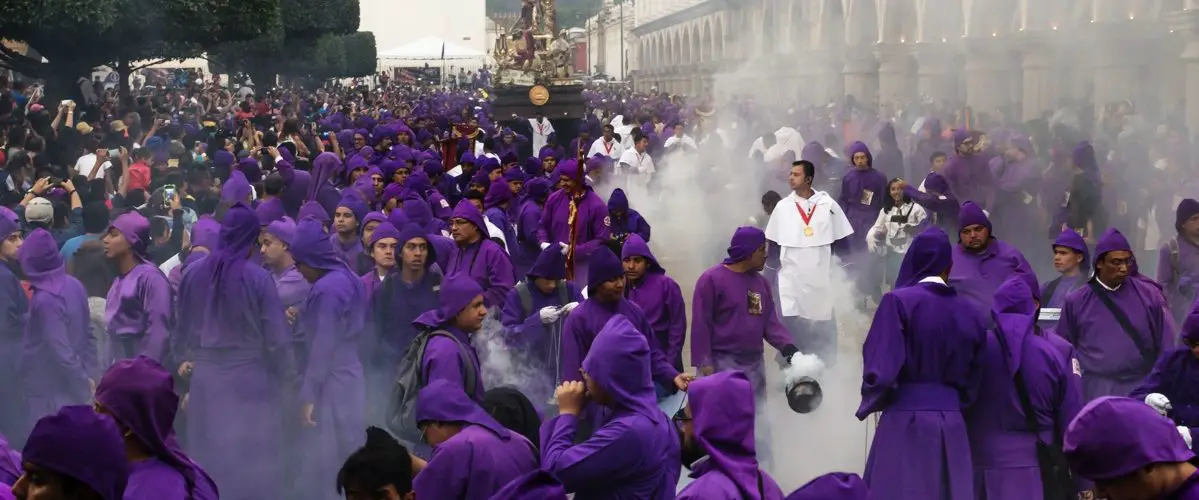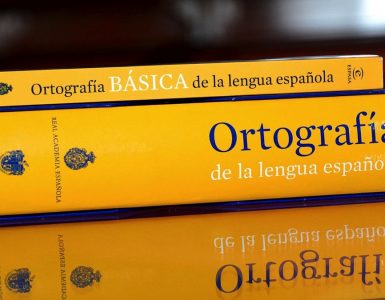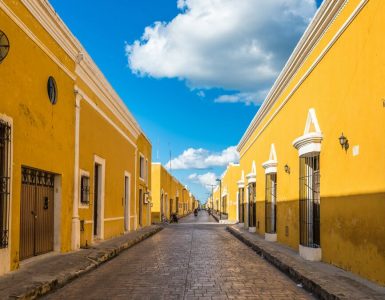More than just a color, purple holds great symbolism and meaning. The word comes from the Greek term Porphyra and the ancient Phoenicians used a dye of this color that they created from the shells of mollusks in the Tyre region of the Mediterranean. This coveted dye was so expensive to produce that only kings, queens and emperors could wear garments dyed in this color. From this comes the belief that purple is the color of royalty, associated with luxury and power.
It should also be noted that this color came to represent spirituality from the moment when the ancient rulers began to have delusions of grandeur, considering themselves gods or descendants of gods. For these were the ones who dressed and adorned their houses with this color, which ended up also being associated with omnipotence, extravagance and unprecedented riches.
Today we are going to see the different ways of saying purple in Spanish, and under which contexts they are used. The term used in Spanish usually depends on the tone of the color and some other factors that we will see below.
Morado – Mulberry
The real difference between morado and púrpura is that morado is a true color, which is part of the electromagnetic spectrum of light, while purple is not within this spectrum. In fact, púrpura is used to call any color that falls between red and blue, however, it is common for mulberry to be used indiscriminately, just like purple, to name these tones as well. Morado can also vulgarly refer to a bruise in all Latin American countries.
Nazareno – Nazarene
In South America, the purple nazareno or simply nazareno color is the tone of purple that is associated with the garments worn by Jesus Christ before his crucifixion, since he claimed to be the king of the Jew. He was condemned for blasphemy and then humiliated by being dressed in the garments of a king before being tortured.
Although it also refers to a saint venerated by the Catholic church, when you ask for any type of textile or clothing item in Latin America and you refer to it by the color Nazarene, they will bring you a vibrant and characteristic purple see on Catholic images of Jesus Nazarene or Jesus of Nazareth.
Today, the color purple is seen as a symbol of death and resurrection of human life and sacrifice and service to humanity through Jesus Christ, but it is not to be confused with the color purple worn by bishops. Although they wear it under the same pretext, it is an insult to use the same color as Jesus of Nazareth, as it is considered an offense to his holiness and his sacrifice on the cross.
Violeta – Violet
Violeta is any tone between purple and blue, which is why it is also called purple-blue. However, violet also refers to viola flowers, which also bear the same name and are the exact tone of this hue in the color palette. In Spanish-speaking countries, it is also often used as a proper name, as violas are a very beautiful and prized flower.
Lila – Lilac
It is a tone of purple that belongs to the violet color range, but with a much paler and softer hue. Its name comes from the flower of the same name, which visually describes the exact tone of this much-appreciated purple color. It is also a very widespread feminine proper name in Spanish.
Lavanda – Lavender
Lavanda is a pale version of the violet range and is named after the fragrant shrub that bears lavender flowers. It is also often called wisteria, although lavanda is more commonly used by Spanish speakers. The fragrance of this plant is widely used for cleaning products, so these chemicals are of this color and are also often said to refer to the scent.
Violáceo – Violaceus
It is the seventh color of the solar spectrum and refers to some object or thing that is specifically violet in color. We can find it in printed media and written poetry since it is a refined term that dates back to ancient times. It also often refers to bruises, since the purple color that characterizes them takes time to appear and while it appears, it varies between violet tones.
Escarlata – Scarlet
Although today we use scarlet to refer to a tone of deep red, approaching wine, in the past this was not the case. Scarlet is actually a tone of purple that lies between purple and red, which, like Tyrian purple, was difficult to manufacture and is another of the most valuable fabrics, used by wealthy people or people of high social position such as rulers, kings, emperors, counts and all those of a high lineage.
Purpúreo – Purplish
Etymologically, it is formed like the word violáceo only that it refers to purple tones. As we know that purple is any tone of color derived from purple, it is a generalized term found in literary texts to refer to any shade that is neither violet nor violaceous.
Cardenal – Cardinal
As we mentioned before, this color refers to the purple worn by cardinals as a sign of service and sacrifice to humanity. A cardinal is the highest rank that the pope can designate a priest and they are in charge of advising the pope and electing a new one when he dies. This tone is between the range of purple and red, so the purple tone worn by these leaders is often directly called “cardinal red” or cardinal color.
Malva – Mauve
It is a soft color, similar to lilac, which is part of the range of violet and magenta, so it can also be associated with pink. It is named after the mauve flower and is also synonymous with the color orchid, as they are the same tone and also belong to a flower.
It is also called mauve color in Spanish because of an accidental experiment of William Perkins, trying to oxidize aniline to get quinine. Quinine was the only remedy for malaria available at the time, and although this experiment failed, it resulted in the first chemical dye known as Perkins mauve, mauveine or simply purple aniline.
Purpurino – Purpurine
Although this term can be used to mean purple in Spanish, it does not refer to the color as such, but to something that has various tones of purple. On the other hand, it also refers to a powder of a clear metal that is applied to paints before they dry to achieve a silvery finish. The feminine purpurina also refers to decorative powder for crafts, also called frosting, brilliantine or glitter thanks to the resemblance it gives to that powder.
Final thoughts
From royalty to the beauty of flowers, purple has become an emblematic color that reflects beauty, power, sacrifice towards the welfare of humanity, wealth, hierarchy, luxury and even eccentricities. Over the years, it has been a controversial and important color, which has gained great relevance in the textile industry, haute couture and floriculture. I hope you have found these different ways of saying purple in Spanish interesting and that they will help you to identify the different tones of purple when talking about it in Spanish.










Add comment